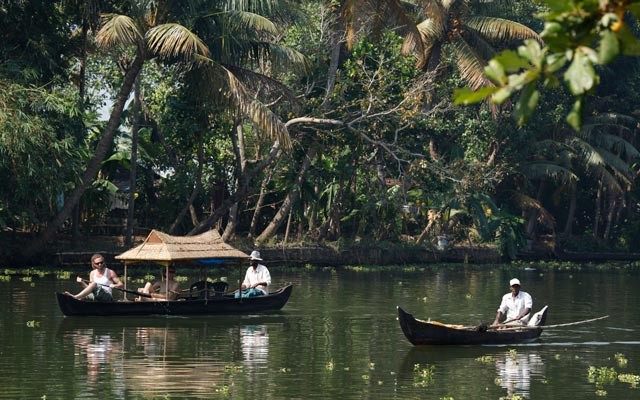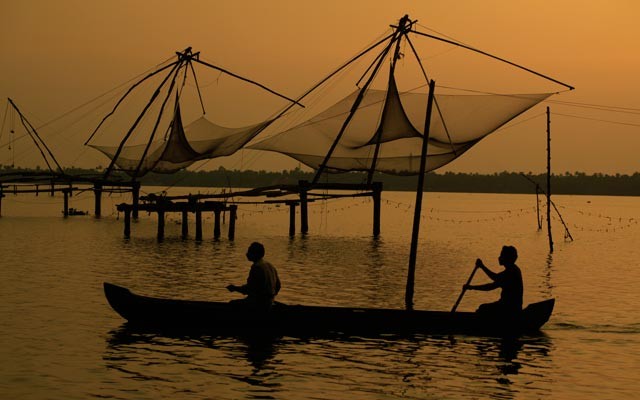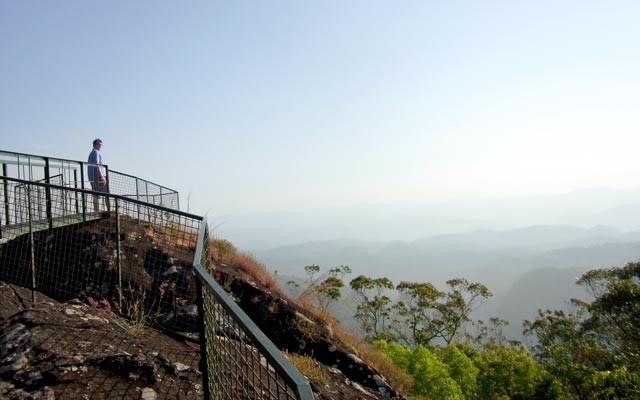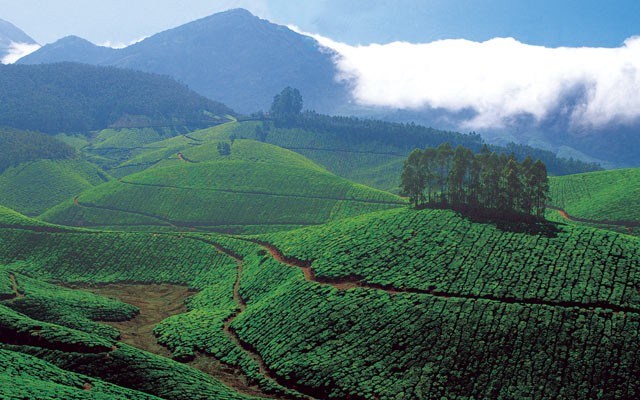Nestled on the tip of the Indian Subcontinent south of Goa, Kerala is a lush ribbon of land that sits on the tropical Malabar Coast between the Arabian Sea and the mountainous Western Ghats.
This is an Indian state bursting with nature. Shimmering lagoons and waterways, cardamom-clad hills, tea plantations, palm-fringed beaches, an abundance of gloriously coloured flowers and lush vegetation teeming with birds and wildlife combine wildly, placing Kerala firmly on the dream-destination world map.
Lured by the promise of exotic adventure, we chose Kerala as the destination for our three-week honeymoon; just enough time to sample a pick of its highlights. Tourism is mainly concentrated in Kerala's south, so like most visitors we started our trip in the harbour-side city of Cochin (British Raj word for Kochi), staying in the historic Fort Cochin and Mattancherry district, defined by its colonial charm and thriving arts scene. This part of Kerala has been drawing people to its shores for years — especially traders from China, Portugal, the Middle East, Holland and Britain, all in search of spices, who in turn left their own individual mark in some way.

PHOTO BY ELLIE SEYMOUR - Alappuzha-backwater
To experience the town's colonial past, we picked up a free walking-tour map produced by Kerala Tourism from its tourist desk, containing routes, which led us around some of the area's more significant landmarks, including the early 18th-century Dutch cemetery, Portuguese explorer Vasco da Gama's supposed house, several merchants' residences and the iconic Chinese fishing nets on the waterfront which are still in use today.
There are several art galleries to explore too, and the Kashi Art Café (kashiartgallery.com) provided a regular mid-sightseeing pit-stop serving great coffee. Spoiled for dining options, we soon discovered that the stylish Malabar House Hotel, set in a former 17th-century Dutch residence, offered the perfect setting for an aperitif, and the cosy Fort House Hotel (hotelforthouse.com) restaurant overlooking the busy harbour served some of the best moillee — Keralan fish curry — as well as fish tikka kebabs in the city.

PHOTO BY ELLIE SEYMOUR - Fishing nets, Kochi
Hiring a driver and his iconic Ambassador taxi, we headed 130 kilometres east inland from Fort Cochin to the hillside town of Munnar, stopping only for our driver, Ganesh, to make a blessing at a roadside Hindu shrine, and to pass a mile-and-a-half-long Hindi village festival procession. Colourful sari-clad ladies holding bright parasols and men in traditional dress sang to music as they walked to the next village — a taste of just one of the many festivals on the Keralan calendar.
Munnar sits at an altitude of 488 metres in the High Range area of the Western Ghats. This is where spices are grown, as well as tea, an industry started by the British in 1890, with great swathes still cultivated today by the Tata group. As a result, the landscape is littered with working tea factories and quaint old colonial bungalows, some of which can be visited as part of tours.

PHOTO BY ELLIE SEYMOUR - View from the Windermere Estate.
We stayed at the alpine-style Windermere Estate (windermeremunnar.com) perched 1,500-metre high on a hilltop above the town amid cardamom and tea groves, with glorious views over the Chithirapuram Valley — a sight we awoke to each morning. A two-hour guided tour of the estate introduced us to our environment, our guide pointing out spice plants, exotic birds and colourful flowers, while a longer six-hour guided trek took us higher up into the mountains, culminating in a breathtaking 360-degree panoramic vista of the entire tea region down to the Windermere Estate, across the Western Ghats from Munnar to the coast.
Another opportunity for spectacular views was on the scenic three-hour state bus ride from Munnar to Periyar Wildlife Sanctuary, one of India's largest national parks at 777 square kilometres, which took us across the high ridges and lush tropical forests of the Cardamom Hills.
Using the nearby village of Kumily as our base, more hiking with a local guide was on the agenda, around the sanctuary's artificial lake in the hope to catch a glimpse of a wild elephant, or even tiger, but it wasn't meant to be. Alas, our most impressive sighting of any wild animal in Kerala remains from the window of our Ambassador taxi, of a group of playful monkeys causing mischief by the roadside.
Birds are far easier to spot though, especially on a cruise through Kerala's verdant network of backwaters, when we were lucky enough to see agile kingfishers diving in and out of the water. Stretching between the coastal towns of Alappuzha and inland Kottayam, the backwaters consist of a network of canals, lagoons, rivers and lakes linking villages with markets, fishing grounds and far-flung paddy fields.
Many old barges used to transport rice have been converted into houseboats that can be rented overnight, but we opted for a stay at a waterside Ayurvedic resort (keraleeyam.com) and took day trips on a smaller wooden boat instead. This meant we could travel down the narrower and more beautiful canals fringed with coconut palms and dotted with wooden houses. This was also by far more relaxing than the forcefully administered Ayurvedic full-body massage on a cold stone tablet I experienced at the resort.




